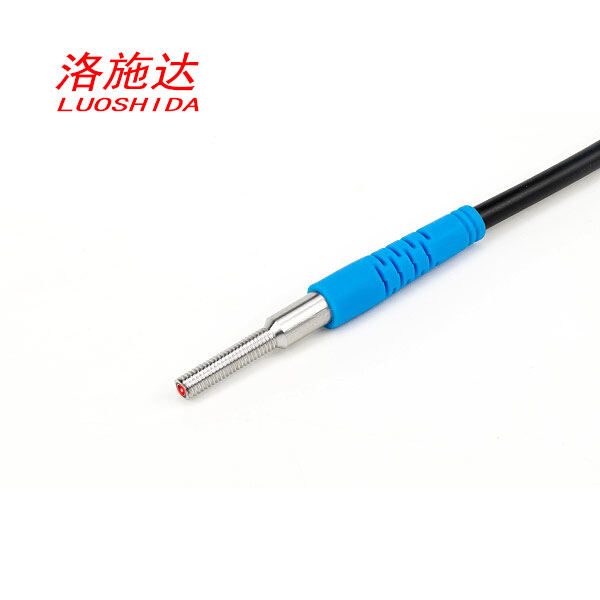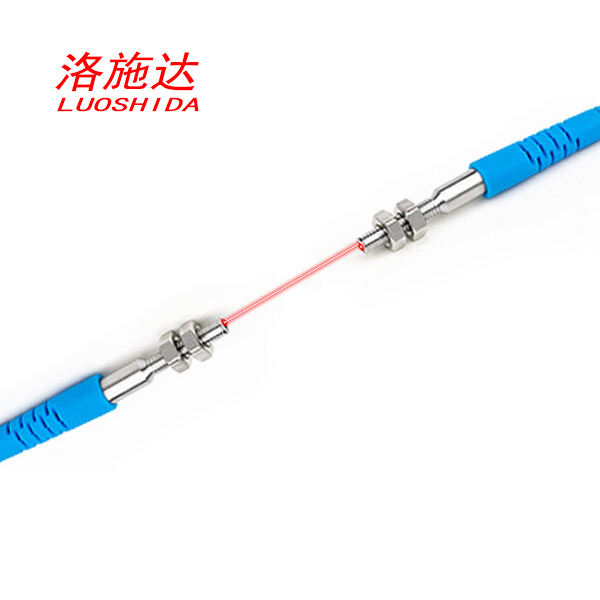Want non - contact detection? Infrared sensors are the way to go
Fundamentals of Non-Contact Infrared Detection
Principles of Infrared Radiation
Infrared radiation is a type of electromagnetic wave with wavelengths ranging from 700 nm to 1 mm, making it longer than visible light. Understanding how infrared radiation interacts with materials is vital for applications involving non-contact detection, as different materials will absorb, reflect, or transmit these waves uniquely. Materials like metals often reflect infrared waves, whereas others like glass might transmit them. According to the Stefan-Boltzmann Law, the intensity of emitted infrared radiation is proportional to the fourth power of an object's temperature. This principle is crucial for detecting objects, as it helps in understanding thermal emissions effectively, which is foundational in applications like thermal imaging and non-contact temperature measurements.
Active vs Passive Sensing Mechanisms
Active sensing mechanisms involve sensors like laser sensors that emit their own infrared signals to detect objects. This makes them suitable for precise and long-range applications due to their ability to interact with distant targets directly. In contrast, passive sensors detect infrared radiation emitted naturally from objects. They are particularly useful for thermal imaging applications, as they capitalize on the heat naturally emitted by objects. The choice between active and passive sensing largely depends on the application specifics and environmental conditions. For example, active sensors may offer advantages in conditions where ambient infrared radiation is insufficient for passive detection.
Wavelength Considerations for Different Materials
When deploying non-contact infrared detection technologies, it's crucial to consider the wavelength properties of the target materials. Different materials have varying levels of infrared absorption and reflection depending on the wavelength, which impacts detection accuracy significantly. Identifying the optimal wavelength helps ensure that the system accurately detects the material’s reflective or transmissive properties. This is especially crucial in industries such as automotive and medical, where tailored wavelength settings can greatly enhance sensor performance. For instance, in medical diagnostics, precise wavelength control is fundamental for reliable imaging results, while in the automotive industry, it aids in improving safety measures by accurately detecting environmental objects.
Infrared Sensor Types for Precision Detection
Proximity Sensors vs Photoelectric Sensors
Proximity sensors and photoelectric sensors are critical tools for precision detection. Proximity sensors detect objects without physical contact by utilizing electromagnetic fields, making them highly effective in automation applications. Their ability to sense metallic and non-metallic objects without direct contact is beneficial in ensuring seamless operation in manufacturing lines. On the other hand, photoelectric sensors work by emitting a beam of light which, upon interruption by an object, triggers a detection signal. This makes them excellent for fine measurement applications, such as detecting small components or transparent materials. When selecting between these sensor types, key factors to consider are the detection range, object material, and required response time, as these elements significantly impact the sensors' effectiveness and suitability to specific tasks.
Laser Diffuse vs Through-Beam Configurations
In the realm of infrared sensors, laser diffuse and through-beam configurations offer distinct advantages for object detection. Laser diffuse sensors operate by reflecting laser light off an object and analyzing the return signal, which is particularly useful for detecting small objects or subtle surface details. This method simplifies installation as it requires no alignment between transmitter and receiver. Conversely, through-beam sensors demand precise alignment of the transmitter and receiver across the path of an object, providing superior accuracy and range. They excel in applications where uninterrupted detection over long distances is essential. The choice between these configurations should consider the operational environment, as factors such as space constraints and risk of false readings will influence the decision.
Thermal Imaging vs Photovoltaic Detection
Thermal imaging and photovoltaic detection represent two diverse approaches to infrared detection, each catering to specific applications. Thermal imaging sensors detect and map the heat emitted by objects to create real-time images based on temperature variations. This is particularly advantageous for surveillance or monitoring applications in settings with complex heat profiles. In contrast, photovoltaic detection employs semiconductor materials to generate a voltage in response to detected infrared radiation, making it ideal for low-light conditions or ambient light scenarios. Each technology is tailored for unique purposes, with thermal imaging often applied in security and maintenance fields, while photovoltaic detection suits applications needing efficient performance in varying lighting conditions. The selection between these technologies hinges on the specific needs and environmental constraints of the intended application.
FSCW Sensor Solutions for Industrial Applications
DC M3 Ultra-Mini Laser Sensor (Diffuse Mode)
The DC M3 Ultra-Mini Laser Sensor operates in diffuse mode, enhancing detection precision at short ranges. This makes it particularly useful in environments where space is constrained. Its compact design, with dimensions of M3*20mm, allows for seamless integration into tight spaces, where traditional sensors might not fit. The sensor's advanced optics ensure it remains highly efficient and minimizes interference, enabling it to perform reliably in dynamic environments.
DC M3 Through-Beam Laser Sensor
The DC M3 Through-Beam Laser Sensor is designed for extended detection ranges, offering up to 20 meters of accurate sensing, ideal for applications such as counting or security systems. Though it requires precise alignment between the transmitter and receiver, this configuration minimizes false positives, making it a reliable choice for ensuring detection accuracy. Industrial scenarios, including object verification in conveyor systems, demonstrate its utility and efficiency.
Customizable Output Configurations
FSCW sensors come equipped with customizable output configurations, making them adaptable to a wide range of industrial needs and systems. Users can tailor parameters, including sensitivity and response time, allowing for specific customization to meet unique operational requirements. This adaptability significantly enhances the sensor's versatility, ensuring it can efficiently integrate across diverse industrial environments, whether for complex process automation or simple object detection tasks.
Implementation Best Practices
Optimizing Sensing Distance Adjustments
Effectively optimizing sensing distance adjustments is crucial for maintaining accurate detection within industrial environments that often present variable conditions. By calibrating the sensing distance, Industrial systems can ensure objects are consistently within the detection range, thus boosting operational efficiency and reducing the likelihood of errors. Routine calibration practices are essential to sustain optimal sensor performance over time, adapting to any environmental changes or system modifications.
Environmental Interference Mitigation
Environmental factors like dust, fog, and temperature fluctuations significantly impact sensor performance and accuracy. To combat these interferences, implementing protective housing and selecting materials resistant to environmental conditions can be effective. Regular maintenance schedules and periodic environmental assessments further ensure that sensors remain operationally effective, preventing degradation in their performance due to unforeseen external factors.
Integration with Control Systems
Seamless integration of sensors with existing control systems greatly enhances the functionality of a facility’s automation capabilities. Utilizing protocols such as Modbus or Ethernet/IP can facilitate robust communication between sensors and control systems, ensuring smooth data exchange and system coherence. It is equally important to train personnel in integration techniques to leverage these technologies effectively, thus maximizing efficiency and operational performance.
Future Trends in IR Detection Technology
Miniaturization in Sensor Design
The trend towards miniaturization in sensor design is reshaping the infrared sensor market. Manufacturers are consistently moving towards more compact yet efficient sensors that do not compromise on performance. This miniaturization trend is particularly beneficial for industries that require installation in tight or confined spaces. It enables easier integration into machines and systems, thereby extending the range of applications. Future advancements in manufacturing technology are expected to produce even smaller sensor arrays with enhanced functionalities, further driving the versatility and deployment potential of these sensors.
Smart Factory Integration Capabilities
In the era of Industry 4.0, smart factory environments are increasingly prevalent, emphasizing the need for sensors that can effectively communicate and cooperate. Infrared sensors are poised to play a pivotal role in these environments, facilitating real-time data collection and enhancing process monitoring capabilities. Effective integration requires a strong collaborative approach between sensor suppliers and manufacturers to harness these capabilities fully. The precise role of sensors in streamlining processes and enabling advanced automation will be indispensable for achieving a truly interconnected and efficient factory setup.
Multi-Spectral Detection Advancements
Recent advancements in multi-spectral detection technology are offering promising developments in the field of infrared sensors. By supporting the simultaneous assessment of different wavelengths, this approach allows sensors to extract richer data sets from their environments. This capability is particularly advantageous in sectors such as agriculture and environmental monitoring, where a broader analysis of variables is essential. The ability to increase accuracy and context-awareness through multi-spectral detection indicates a significant potential for innovation and expanded applications of infrared sensors in various industries.

 EN
EN
 AR
AR
 FR
FR
 DE
DE
 IT
IT
 JA
JA
 KO
KO
 PT
PT
 RU
RU
 ES
ES


